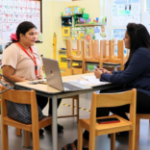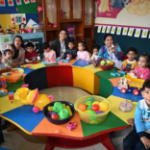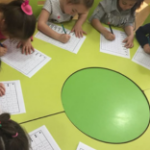
In today’s rapidly evolving educational landscape, active learning stands out as a highly effective approach to teaching and learning. Unlike traditional passive learning methods, active learning engages students in the process, encouraging them to actively participate, think critically, and collaborate with peers. This blog explores the myriad benefits of active learning and offers practical strategies for educators to implement in their classrooms.
What is Active Learning?
Active learning is a pedagogical approach that involves students in activities such as discussion, problem-solving, case studies, role plays, and other hands-on tasks. Instead of passively receiving information from the instructor, students are encouraged to engage directly with the material, fostering a deeper understanding and retention of knowledge.
Benefits of Active Learning
1. Enhanced Critical Thinking Skills
Active learning promotes critical thinking by requiring students to analyze, synthesize, and evaluate information. Engaging with the material on a deeper level helps students develop their ability to think independently and make informed decisions.
2. Improved Retention and Understanding
Studies have shown that students retain information better when they are actively involved in the learning process. Activities that require interaction and practical application of knowledge help to reinforce learning and improve long-term retention.
3. Increased Engagement and Motivation
Active learning strategies often make learning more enjoyable and engaging. When students are involved in interactive activities, they are more likely to be motivated and interested in the subject matter, leading to better attendance and participation.
4. Development of Communication and Collaboration Skills
Many active learning activities involve group work, which helps students develop essential communication and collaboration skills. These skills are crucial not only in academic settings but also in the workplace and everyday life.
5. Personalized Learning Experience
Active learning allows for more personalized learning experiences. Instructors can provide immediate feedback and adjust their teaching strategies to meet the needs of individual students, helping each student to achieve their full potential.
Practical Strategies for Implementing Active Learning
1. Think-Pair-Share
This simple yet effective technique involves three steps:
- Think: Students take a few minutes to think about a question or problem individually.
- Pair: They then pair up with a classmate to discuss their thoughts and ideas.
- Share: Finally, pairs share their insights with the larger class. This strategy encourages individual thinking, peer discussion, and group sharing.
2. Case Studies
Using real-world scenarios, case studies require students to apply their knowledge to solve complex problems. This method helps students to connect theoretical concepts with practical applications, enhancing their problem-solving skills.
3. Group Projects
Group projects encourage collaboration and allow students to tackle larger, more complex tasks than they could individually. Assigning roles within groups can also help students develop specific skills, such as leadership, organization, and communication.
4. Interactive Lectures
Incorporate short activities into traditional lectures to keep students engaged. This could include quick polls, Q&A sessions, or small group discussions. Interactive lectures break up the monotony of passive listening and keep students actively involved.
5. Flipped Classroom
In a flipped classroom, students review lecture materials at home and spend class time engaging in activities that reinforce the content. This approach allows for more hands-on learning and gives students the opportunity to apply concepts with the guidance of the instructor.
6. Peer Teaching
Encourage students to teach each other. This can be done through presentations, peer tutoring, or collaborative group work. Teaching others reinforces the student’s own understanding and provides a different perspective to their peers.
Summary:
Active learning is a powerful educational approach that offers numerous benefits, from enhanced critical thinking and improved retention to increased engagement and the development of essential life skills. By incorporating practical strategies such as think-pair-share, case studies, group projects, interactive lectures, flipped classrooms, and peer teaching, educators can create a dynamic and effective learning environment. Embracing active learning not only transforms the classroom experience but also prepares students for future success in an increasingly complex and collaborative world. Tiny Tots International School, renowned as the best school in Pimpri Chinchwad and Pune, exemplifies these innovative educational practices, ensuring that students receive a top-quality education that fosters lifelong learning and development.
By implementing these strategies, educators can foster a more engaging and effective learning environment that promotes deeper understanding and lifelong learning.




